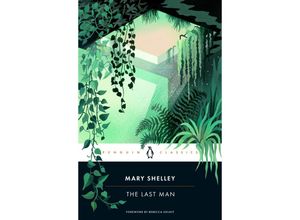Mary Shelley's landmark novel that invented the human extinction genre and initiated climate
fiction imagining a world where newly-forged communities and reverence for nature rises from
the ashes of a pandemic-ravaged society now for the first time in Penguin Classics with a
foreword by Rebecca Solnit A Penguin Classic Written while Mary Shelley was in a
self-imposed lockdown after the loss of her husband and children and in the wake of
intersecting crises including the climate-changing Mount Tambora eruption and a raging cholera
outbreak The Last Man (1826) is the first end-of-mankind novel an early work of climate
fiction and a prophetic depiction of environmental change. Set in the late twenty-first
century the book tells of a deadly pandemic that leaves a lone survivor and follows his
journey through a post-apocalyptic world that's devoid of humanity and reclaimed by nature. But
rather than give in to despair Shelley uses the now-ubiquitous end-times plot to imagine a new
world where freshly-formed communities and alternative ways of being stand in for
self-important politicians serving corrupt institutions and where nature reigns mightily over
humanity—a timely message for our current era of climate collapse and political upheaval.
Brimming with political intrigue and love triangles around characters based on Percy Shelley
and scandal-dogged poet Lord Byron the novel also broaches partisan dysfunction imperial
warfare refugee crises and economic collapse—and brings the legacy of her radically
progressive parents William Godwin and Mary Wollstonecraft to bear on present-day questions
about making a better world less centered around “man.” Shelley’s second major novel after
Frankenstein The Last Man casts a half-skeptical eye on romantic ideals of utopian perfection
and natural plenitude while looking ahead to a greener future in which our species develops new
relationships with non-human life and the planet.

